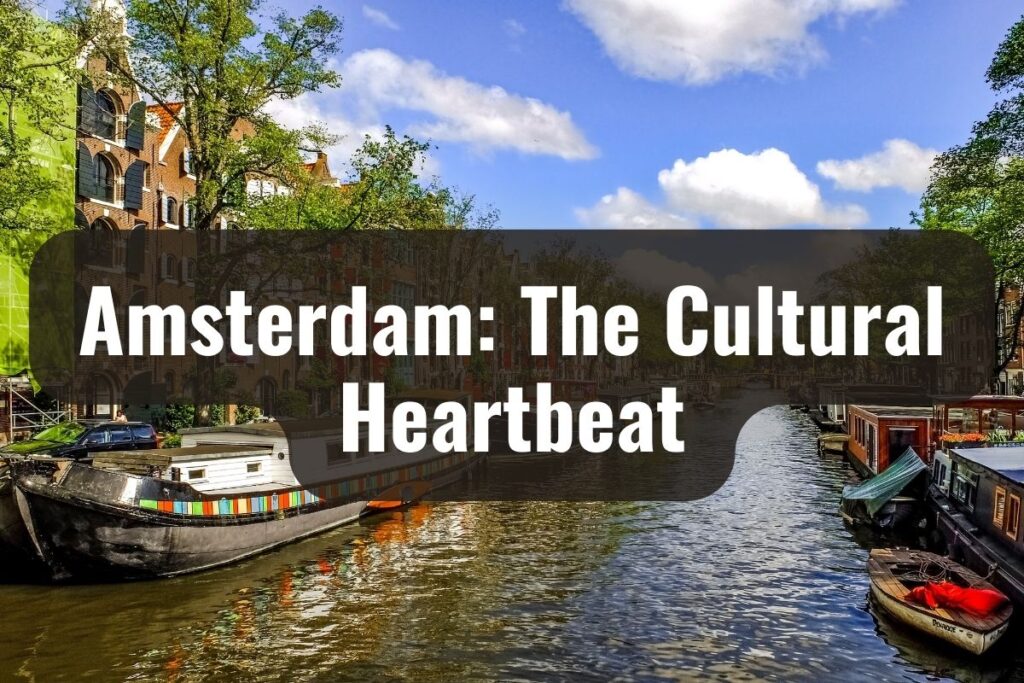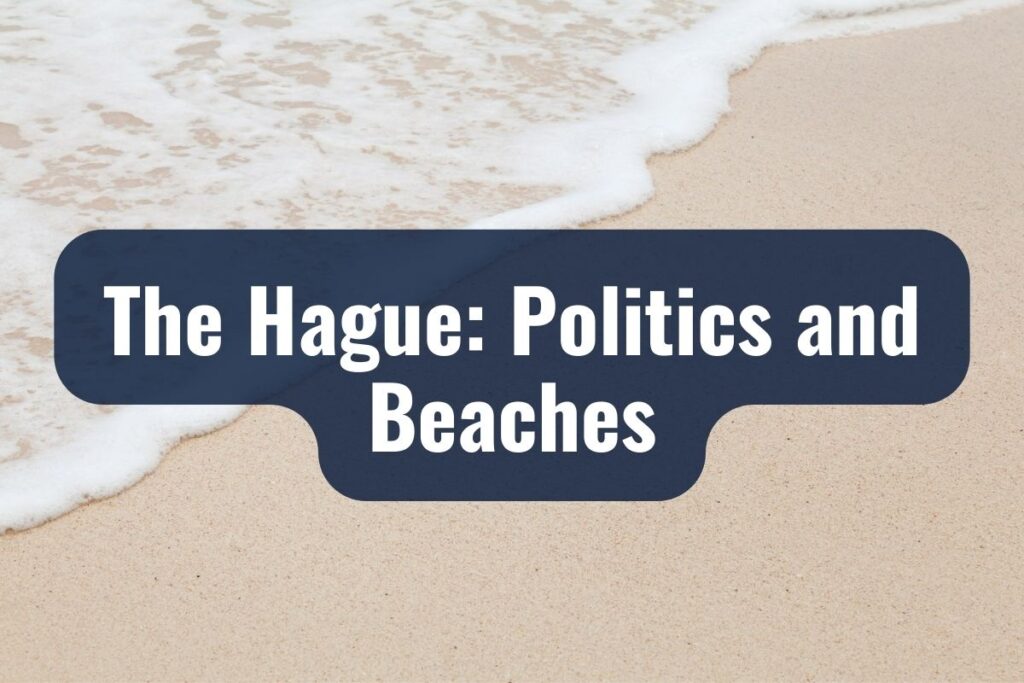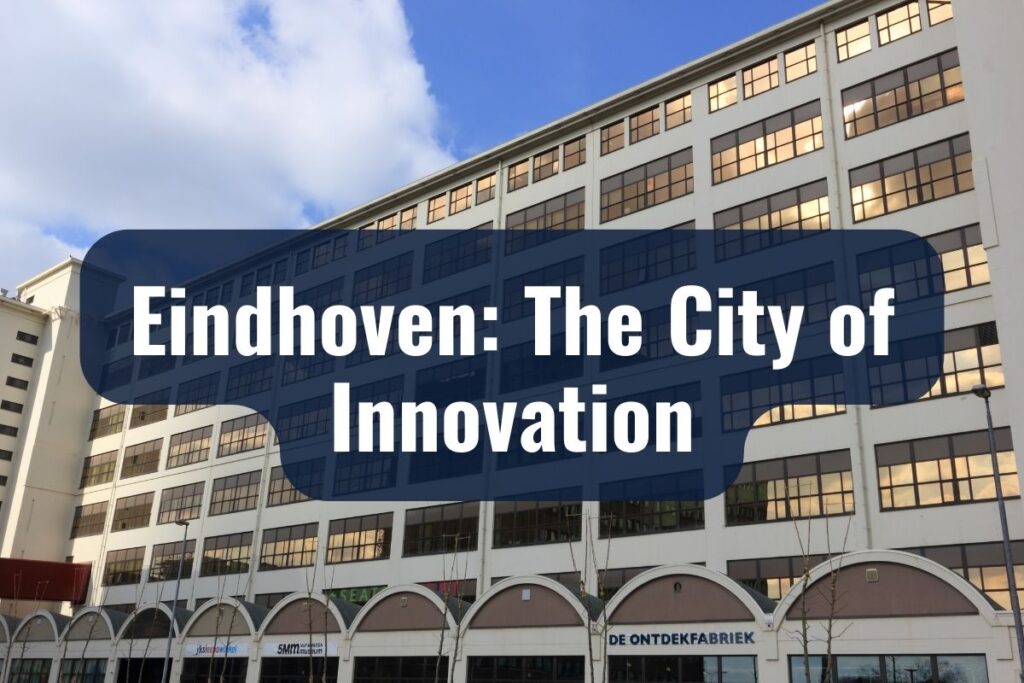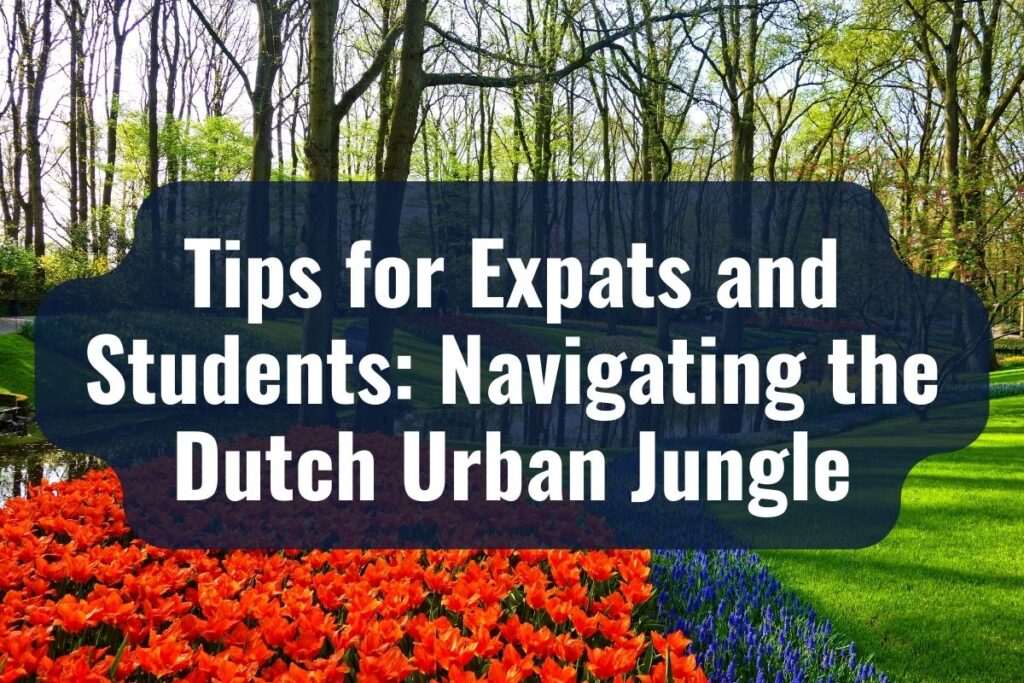For tourists seeking a blend of history with modernity, expats searching for a balance of work and play, or students eager to dive into a multicultural milieu, the Netherlands unfolds like an intricately woven tapestry. And at the heart of this tapestry? The bustling, vibrant cities, each with its own story, allure, and mysteries awaiting to be discovered.
Whether you’re a first-time visitor, someone contemplating a new home, or a student ready for an overseas adventure, journey with us as we explore the biggest cities in the Netherlands. Grab your clogs, and let’s dive in!
Key Takeaways
- Amsterdam offers a rich blend of history and modern vibrancy.
- Rotterdam is a beacon of modernity, rising from a turbulent past.
- The Hague harmoniously combines political significance with coastal allure.
- Utrecht is a captivating blend of history and youthful dynamism.
- Eindhoven stands as a hub for tech, design, and constant innovation.
- Adapting to Dutch cities as an expat or student involves understanding and integrating into the local culture.
Amsterdam: The Cultural Heartbeat

Whisper the word ‘Amsterdam’, and instantly, a myriad of images comes to mind. Glistening canals reflecting centuries-old houses, the sultry allure of the Red Light District, the aromatic waft from cozy coffee shops, and the gentle hum of bicycles zipping by on cobblestone streets. Welcome to Amsterdam, a city where every turn narrates a tale, and every sunset paints a different hue of enchantment.
Let’s drift along the city’s canals, shall we? These waterways, more than mere picturesque sights, are the veins of Amsterdam. As you sail, the stories of yesteryears echo with every ripple, reminding you of the city’s rich maritime history. The Canal Ring, a UNESCO World Heritage site, elegantly showcases the harmonious blend of urban planning and aesthetic beauty.
Beyond the waters, Amsterdam’s cultural fervor is nothing short of legendary. Museums here don’t just display art; they celebrate it. The Van Gogh Museum, for instance, isn’t merely a building but a journey through the tumultuous life of the artist, showcasing masterpieces that are both heartwarming and heartbreaking. Similarly, the Rijksmuseum stands as a sentinel, guarding the treasures of Dutch art, history, and heritage.
Yet, this city isn’t just about the old; it embraces the new with an unmatched enthusiasm. At night, Amsterdam transforms. The alleys come alive with the rhythmic beats of music, and the aroma of global cuisines beckons the hungry traveler. From elegant dining spots to bustling food markets, there’s a bite for every appetite.
Pros
Vibrant Art Scene: Whether you’re an art connoisseur or a casual enthusiast, institutions like the Van Gogh Museum and Rijksmuseum offer an immersive experience.
Diverse Food Culture: From Dutch stroopwafels to international delicacies, the city’s culinary landscape is a delightful exploration.
Efficient Transport: The tram, metro, and bus services are reliable, punctual, and cover almost every nook and cranny of the city.
Cons
Tourist Crowds: Amsterdam’s popularity means that especially during peak seasons, popular sites can be crowded.
Higher Cost of Living: Housing, dining out, and other services tend to be pricier compared to other Dutch cities.
Rotterdam: A Modern Marvel
If Amsterdam is a poetic ode to the past, then Rotterdam is a bold, futuristic symphony. Rising from the ashes after being almost completely destroyed during World War II, Rotterdam has not just rebuilt but reinvented itself, emerging as a beacon of modernity and innovation.
Picture this: the city’s skyline, constantly evolving, dotted with architectural wonders that challenge conventional design. The Cube Houses (Kubuswoningen) aren’t just buildings; they are a statement, tilting precariously as if defying gravity, urging one to rethink residential spaces. Then there’s the Erasmus Bridge, a sweeping curve of steel and cables, gracefully connecting the city’s halves over the shimmering Maas River.
But Rotterdam isn’t just about stunning architecture. It’s also Europe’s largest port, a testament to the city’s economic prowess and its crucial role in global trade. As ships sail in, they bring with them not just goods but a fusion of cultures, which is palpably felt in the city’s diverse neighborhoods and markets.
Yet, among this modernity, Rotterdam remains deeply rooted in its heritage. The historic Delfshaven, a charming district untouched by the ravages of war, offers a delightful juxtaposition. As you stroll its cobbled streets, it’s almost like being transported to another era, a gentle reminder of the city’s resilience and the harmonious balance it maintains between the old and new.
Pros
Architectural Paradise: For design enthusiasts, Rotterdam offers an open canvas of modern, thought-provoking structures.
Vibrant Port Culture: Experience the hustle and bustle of one of the world’s busiest ports and savor the multicultural vibe it brings.
Unique Attractions: From the sprawling Markthal with its food stalls and intricate ceiling art to the Rotterdam Zoo, there’s always something novel to discover.
Cons
Less “Traditional” Dutch Experience: Those seeking classic Dutch landscapes and architecture might find Rotterdam’s modernity a bit overpowering.
Industrial Aesthetics: Certain areas, owing to the city’s port status, might feel more functional than picturesque.
The Hague: Politics and Beaches

Nestled between Rotterdam’s avant-garde structures and Amsterdam’s historic charisma lies The Hague, a city exuding gravitas and coastal charm in equal measure. If there was ever a place where regal corridors whispered state secrets while sandy shores sang songs of relaxation, it would be The Hague.
Dive deep into the heart of the city, and you’ll discover the Binnenhof, a sprawling complex of gothic buildings overlooking a placid pond. It’s not just any complex; it’s the very epicenter of Dutch politics. Here, decisions shaping the nation’s future are made, but even if politics isn’t your forte, the Binnenhof’s architectural allure is universally captivating.
But The Hague isn’t all suits and serious faces. A short tram ride away, and the narrative changes. The breezy Scheveningen beach awaits, with its vast expanse of golden sands and the rhythmic ebb and flow of the North Sea.
Whether you’re looking to soak up the sun, indulge in some seafood by the pier, or simply stroll along the promenade, Scheveningen is a refreshing contrast to The Hague’s political hustle.
For art aficionados, the city offers treasures like the Mauritshuis, where Vermeer’s ‘Girl with a Pearl Earring’ gazes mysteriously from her canvas. And let’s not forget the Peace Palace, an emblem of the city’s commitment to global justice.
Pros
Blend of Urban and Coastal: Few cities offer the unique dichotomy of political buzz and beachside relaxation.
Cultural Richness: Museums and art galleries abound, ensuring that culture vultures are always satiated.
Safe and Serene: Despite its political significance, The Hague offers a tranquil environment ideal for families and those seeking peace.
Cons
Less Nightlife: Compared to Amsterdam’s pulsating nightlife, The Hague is more subdued, with a focus on quiet evenings and fine dining.
Traffic Nuances: Due to its political and diplomatic significance, certain areas can have heightened security or traffic restrictions.
Utrecht: An Underrated Gem
Tucked away from the spotlight often hogged by its more famous siblings lies Utrecht, a city that’s like the enchanting book you chance upon in a quiet corner of a library – unassuming at first glance but brimming with tales waiting to be told.
Meander through Utrecht, and you’ll soon be charmed by its canals, which offer a distinct flavor compared to other Dutch cities. Here, the canals come adorned with unique wharf cellars lining their banks, once used for storage and now transformed into buzzing cafes, boutiques, and restaurants. As boats glide gently on the water above, life thrives just below street level, a delightful world that oscillates between the historic and the contemporary.
This city pulsates with youthful energy, thanks in part to its sizable student population. Utrecht University, one of the oldest in the country, injects vigor and dynamism, making the city a melting pot of ideas, arts, and innovation. The streets echo with the laughter of students, the clinking of coffee cups, and the strumming of guitars, creating a tapestry of sounds that’s as invigorating as it is comforting.
Pros
A Fresh Perspective: Utrecht offers a break from the well-trodden tourist paths, ensuring a more authentic Dutch experience.
Youthful Vibe: The city’s student population brings with it a plethora of events, festivals, and an ever-changing cultural scene.
Central Location: Its central position in the Netherlands makes Utrecht a great base for exploring other parts of the country.
Cons
Smaller International Scene: While cosmopolitan, Utrecht may not offer the same breadth of international communities as Amsterdam or Rotterdam.
Global Recognition: Being lesser-known, Utrecht might not have as many direct international connections or widely recognized landmarks.
Eindhoven: The City of Innovation

When one thinks of the Netherlands, images of canals, windmills, and tulip fields often take center stage. But venture south to Eindhoven, and a different narrative emerges – one of dazzling innovation, cutting-edge technology, and a futuristic spirit that continually propels the city forward.
At the heart of Eindhoven’s narrative is its transformation from a quiet town into an industrial powerhouse, largely credited to Philips, the global tech giant that had its humble beginnings here. Today, remnants of this legacy, like the former Philips factory turned cultural hub Strijp-S, serve as beacons of the city’s innovative spirit.
However, Eindhoven doesn’t merely rest on its historical laurels. The city is now home to a burgeoning tech scene and institutions like the High Tech Campus Eindhoven and the Eindhoven University of Technology. Here, start-ups bloom, researchers delve into the next big breakthroughs, and designers shape tomorrow’s trends.
And speaking of design, no mention of Eindhoven would be complete without highlighting its role as the Dutch design capital. Every year, the city comes alive during the Dutch Design Week, showcasing avant-garde concepts and groundbreaking projects that often blur the line between art and functionality.
Pros
Tech & Design Hub: For tech enthusiasts and design aficionados, Eindhoven offers a playground of innovation and creativity.
Rich Industrial History: The Philips Museum and other heritage sites offer a deep dive into the city’s transformational journey.
Burgeoning Cultural Scene: Beyond tech and design, the city boasts a lively array of theaters, music venues, and art galleries.
Cons
Less Traditional: Eindhoven’s focus on modernity might make it less appealing for those seeking a quintessential Dutch experience.
Rapid Changes: The city’s fast-paced growth means that neighborhoods and landscapes are continually evolving, which might be disorienting for some.

The life of an expat or student — few surroundings, unfamiliar faces, and a whirlwind of emotions ranging from exhilaration to homesickness. The Netherlands, with its rich tapestry of cities, each unique in its flavor, can be a delightful yet daunting maze.
Whether you’re sipping coffee by Amsterdam’s canals, attending a design workshop in Eindhoven, or cycling through Utrecht’s historic streets, here are some tips to help you seamlessly merge into the Dutch tableau.
Embrace the Bicycle: No matter which city you’re in, the Dutch love affair with bicycles is evident. Not only is it eco-friendly and healthy, but it’s also often the fastest mode of transportation.
Learn a Bit of Dutch: While most Dutchies speak impeccable English, a simple “Dank je” (thank you) or “Goedemorgen” (good morning) can work wonders in breaking the ice.
Join Local Groups: Platforms like Meetup or local expat clubs often host events, which are fantastic opportunities to mingle and understand the local culture better.
Understand the Housing Market: Especially in popular cities like Amsterdam or Utrecht, the housing market can be competitive. Consider starting your search early or looking at neighboring towns for more options.
Respect Local Customs: Whether it’s not disturbing the tranquility of Sunday mornings or understanding that birthdays in the Netherlands involve congratulating the entire family, being aware of local customs ensures a harmonious stay.
Explore Beyond Your City: Each Dutch city offers a unique palette of experiences. Weekend trips can provide a broader perspective of the country’s diversity.
Seek Student or Expat Services: Many cities have dedicated services to help newcomers settle, from handling bureaucratic processes to finding accommodation.
Remember:
- The Netherlands, despite its small size, is diverse in its offerings. Keep an open mind and heart.
- Every stumble, every mispronounced Dutch word, and even that awkward moment when you mistakenly enter a cycle lane, is part of your unique journey. Embrace it all.
Remember that every canal, windmill, and tulip field is a chapter in your story, whether you’re here for a semester, a job stint, or considering making the Netherlands your forever home. And what a delightful story it’s set to be!



